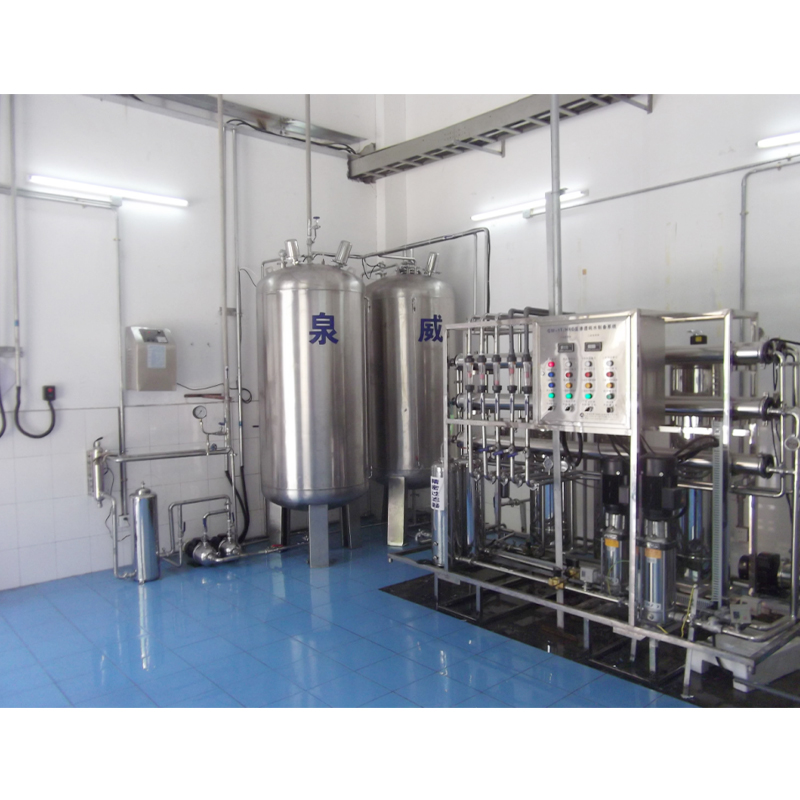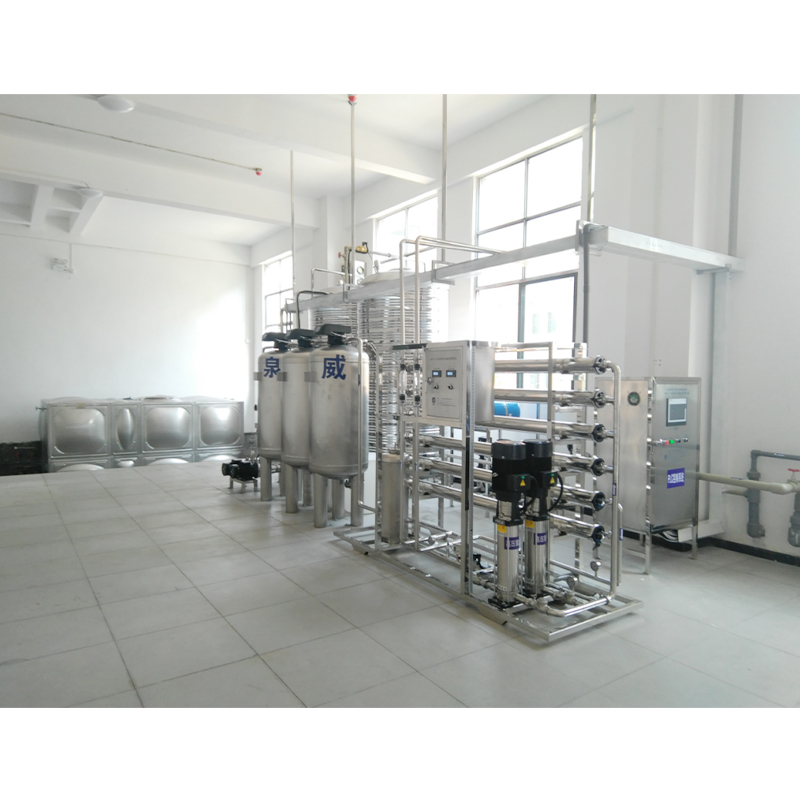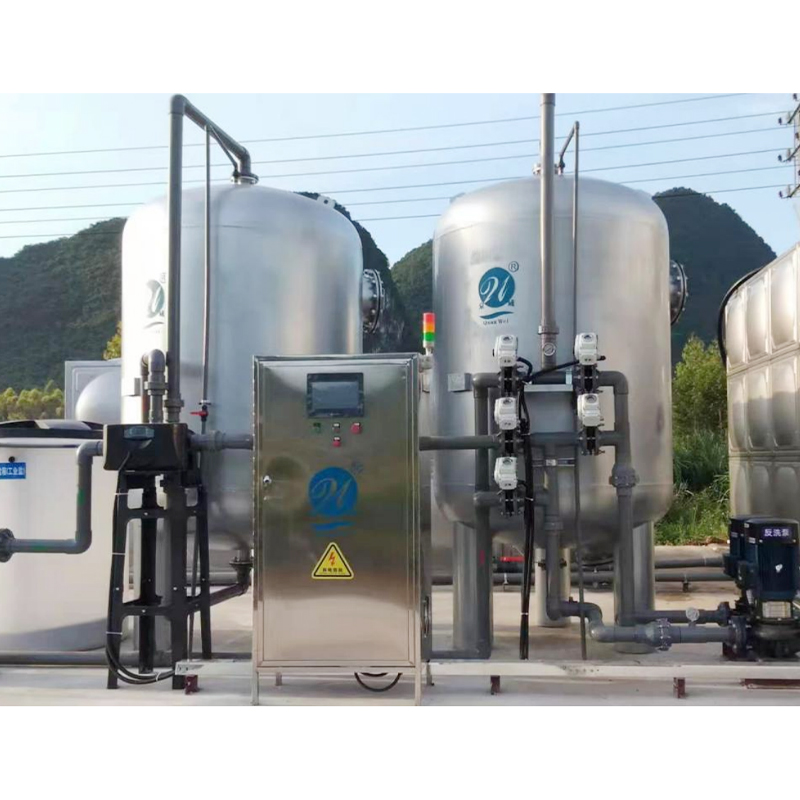How can sewage treatment equipment quickly adjust its operating mode to ensure effluent meets standards when dealing with sudden surges in high-concentration sewage?
Release Time : 2025-11-11
With rapid urbanization and frequent industrial activities, sewage treatment plants often face the challenge of sudden surges in high-concentration sewage—such as combined sewer overflows caused by heavy rain, illegal discharges by enterprises, and accidental leaks. These surges are characterized by their suddenness, high pollutant concentrations, and complex composition, easily leading to the collapse of biological systems, sludge poisoning, or effluent quality exceeding standards. Sewage treatment equipment must possess rapid response and intelligent control capabilities to ensure continuous compliance with effluent standards while maintaining system stability.
1. Establishing a Front-End Early Warning and Buffer Mechanism
Rapid response hinges on "early detection and early intervention." Advanced sewage treatment systems typically deploy online water quality monitoring instruments at the inlet, combined with a big data platform to analyze water quality trends in real time. Once an abnormal increase is detected, the system can automatically trigger an early warning and adjust the inlet gate or switch to an emergency regulating tank. The emergency regulating tank, as a critical buffer unit, can temporarily store high-concentration sewage, preventing it from directly entering the core treatment unit and buying valuable time for subsequent process adjustments. Some advanced wastewater treatment plants have also introduced "water quality fingerprinting" technology, which quickly identifies pollution source types through spectral characteristics, assisting in the development of targeted response strategies.
2. Enhancing the Flexible Design of Process Systems
Traditional wastewater treatment processes are less adaptable to shock loads, while modern equipment emphasizes "flexible redundancy" design. For example, using multi-stage A/O or modified SBR processes allows for flexible allocation of hydraulic retention time and aeration intensity in different reaction zones; MBR systems, with their high sludge concentration and membrane retention, can withstand higher organic loads in the short term. Furthermore, measures such as bypass recirculation, dynamic adjustment of internal recirculation ratios, and optimization of carbon source dosing points can also enhance the shock resistance of nitrogen and phosphorus removal systems. For extreme situations, some plants are equipped with emergency dosing devices to quickly replenish nitrifying agents, PAC, or carbon sources, maintaining microbial activity and flocculation effects.
3. Achieving Dynamic Control Through Intelligent Control Systems
Faced with sudden shocks, manual intervention is often delayed and highly dependent on experience. Intelligent control systems based on the Internet of Things and artificial intelligence are becoming a key support. This system can collect influent water quality, dissolved oxygen, ORP, MLSS, and other parameters in real time. Through preset algorithms or machine learning models, it automatically adjusts aeration rate, return ratio, sludge discharge cycle, and reagent dosage. For example, when a sudden increase in COD is detected, the system can instantly increase aeration intensity and extend the residence time in the aerobic zone; if ammonia nitrogen surges, it prioritizes oxygen supply to the nitrification zone and initiates carbon source replenishment. This "sensing-decision-execution" closed-loop control significantly improves the equipment's adaptability to shock loads.
4. Develop a Tiered Emergency Response Plan
In addition to technical measures, a sound management mechanism is equally indispensable. Wastewater treatment plants should establish tiered emergency response plans: Level 1 response is for minor fluctuations and is handled by the automatic control system; Level 2 response involves moderate shocks and requires manual intervention to adjust operating parameters and activate the equalization tank; Level 3 response addresses severe pollution events and may involve flow restriction, diversion, or even temporary shutdown to protect core facilities. Simultaneously, regular emergency drills should be conducted, and operation and maintenance personnel should be trained in rapid diagnosis and handling skills to ensure a rapid and appropriate response in real emergencies.
Sudden surges in high-concentration wastewater pose a significant challenge to the resilience and intelligence of sewage treatment equipment. Through a comprehensive strategy integrating "front-end early warning, process flexibility, intelligent control, and emergency response mechanisms," modern wastewater treatment systems have gradually shifted from "passively enduring" to "actively defending."
1. Establishing a Front-End Early Warning and Buffer Mechanism
Rapid response hinges on "early detection and early intervention." Advanced sewage treatment systems typically deploy online water quality monitoring instruments at the inlet, combined with a big data platform to analyze water quality trends in real time. Once an abnormal increase is detected, the system can automatically trigger an early warning and adjust the inlet gate or switch to an emergency regulating tank. The emergency regulating tank, as a critical buffer unit, can temporarily store high-concentration sewage, preventing it from directly entering the core treatment unit and buying valuable time for subsequent process adjustments. Some advanced wastewater treatment plants have also introduced "water quality fingerprinting" technology, which quickly identifies pollution source types through spectral characteristics, assisting in the development of targeted response strategies.
2. Enhancing the Flexible Design of Process Systems
Traditional wastewater treatment processes are less adaptable to shock loads, while modern equipment emphasizes "flexible redundancy" design. For example, using multi-stage A/O or modified SBR processes allows for flexible allocation of hydraulic retention time and aeration intensity in different reaction zones; MBR systems, with their high sludge concentration and membrane retention, can withstand higher organic loads in the short term. Furthermore, measures such as bypass recirculation, dynamic adjustment of internal recirculation ratios, and optimization of carbon source dosing points can also enhance the shock resistance of nitrogen and phosphorus removal systems. For extreme situations, some plants are equipped with emergency dosing devices to quickly replenish nitrifying agents, PAC, or carbon sources, maintaining microbial activity and flocculation effects.
3. Achieving Dynamic Control Through Intelligent Control Systems
Faced with sudden shocks, manual intervention is often delayed and highly dependent on experience. Intelligent control systems based on the Internet of Things and artificial intelligence are becoming a key support. This system can collect influent water quality, dissolved oxygen, ORP, MLSS, and other parameters in real time. Through preset algorithms or machine learning models, it automatically adjusts aeration rate, return ratio, sludge discharge cycle, and reagent dosage. For example, when a sudden increase in COD is detected, the system can instantly increase aeration intensity and extend the residence time in the aerobic zone; if ammonia nitrogen surges, it prioritizes oxygen supply to the nitrification zone and initiates carbon source replenishment. This "sensing-decision-execution" closed-loop control significantly improves the equipment's adaptability to shock loads.
4. Develop a Tiered Emergency Response Plan
In addition to technical measures, a sound management mechanism is equally indispensable. Wastewater treatment plants should establish tiered emergency response plans: Level 1 response is for minor fluctuations and is handled by the automatic control system; Level 2 response involves moderate shocks and requires manual intervention to adjust operating parameters and activate the equalization tank; Level 3 response addresses severe pollution events and may involve flow restriction, diversion, or even temporary shutdown to protect core facilities. Simultaneously, regular emergency drills should be conducted, and operation and maintenance personnel should be trained in rapid diagnosis and handling skills to ensure a rapid and appropriate response in real emergencies.
Sudden surges in high-concentration wastewater pose a significant challenge to the resilience and intelligence of sewage treatment equipment. Through a comprehensive strategy integrating "front-end early warning, process flexibility, intelligent control, and emergency response mechanisms," modern wastewater treatment systems have gradually shifted from "passively enduring" to "actively defending."







